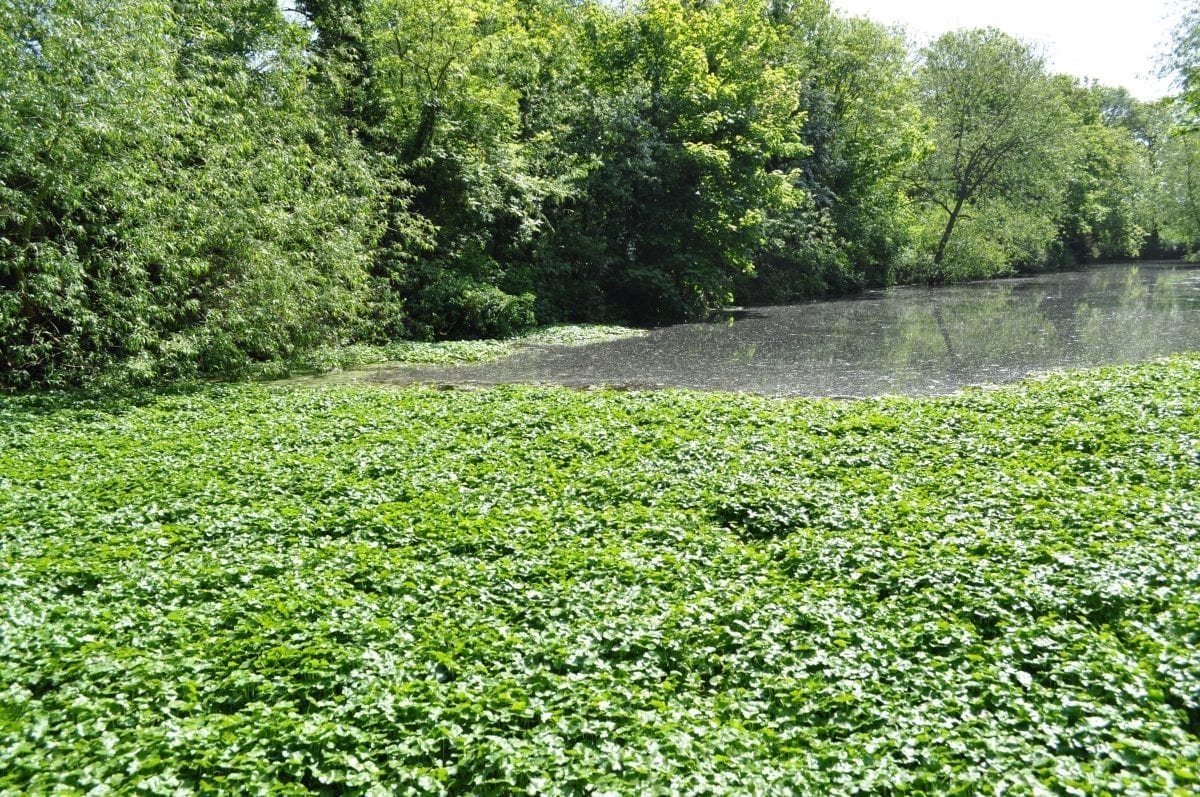The importance of our region’s rivers
Posted: 26 September 2025
Our region’s rivers do more than add beauty to the landscape; they’re vital to daily life.
 Floating pennywort on a chalk stream in Cambridge
Floating pennywort on a chalk stream in Cambridge
Rivers across the UK provide much of the water on which we all depend, and support wildlife, ecosystems and recreation.
This Sunday is World Rivers Day, and organisations across the world will be celebrating and raising awareness of the importance of our rivers.
Does any of our water come from rivers?
Our water comes from groundwater, water that is held underground in a chalk aquifer. The aquifer holds large quantities of water in a network of fractures and cracks in the rock, and we abstract it from 24 boreholes.
This source of water is the same source of water that feeds our region’s chalk steams, a rare type of spring-fed river.
There are 283 chalk streams in the world, and a quarter of these can be found in East Anglia.
In our supply region, you can find urban examples of chalk streams such as Hobson’s Brook and Cherry Hinton Brook, and rural examples such as the River Granta and the River Shep.
Why are rivers important?
Not only do rivers provide a source for some of our drinking water, but they are freshwater habitats, home to some of the most diverse and endangered wildlife on our planet, including kingfishers, otters and brown trout.
Around the world, rivers are vital to people’s ways of life, particularly in fishing and agriculture.
What are the challenges facing our rivers?
Over-abstraction – taking too much water out of our rivers – is a key challenge. Affected by factors such as population growth and prolonged periods of dry weather, water for homes, farms, and industries can be taken quicker than it can be naturally replenished, and this can lead to not enough water being left for the natural environment.
Another challenge is pollution. Farming fertilisers, pesticides, herbicides and urban sewage all affect the quality of rivers.
Water and wastewater companies (for our region Anglian Water), are allowed to spill sewage into open water following heavy rainfall to prevent the system from becoming overloaded, using relief valves called “storm overflows” to release extra rainwater and wastewater into rivers or seas.
The water industry in England has published a National Storm Overflows Plan setting out almost 9,000 improvements to reduce spills from storm overflows.
The Plan meets/ exceeds all UK government targets and represents the most expansive programme for overflows in the world.
What is Cambridge Water doing to help rivers?
Water companies are regulated and have legal requirements they need to adhere to in order to protect the environment.
We are committed to protecting and enhancing the environment for the benefit of our customers, now and for future generations.
To do this, we are working carefully to manage the water we take from the environment in a sustainable way, help customers to manage their own water use and improve the biodiversity of our local habitats.
Our region is one of the fastest growing, but also one of the driest. To improve the long-term resilience of our water supplies, we are investing in two key collaborative projects with Anglian Water – the Fens Reservoir, a new reservoir in the Cambridgeshire Fens, and the Grafham to Cambridge pipeline, a 25km pipeline from Grafham Water reservoir.
There are various ways we’re working to deliver biodiversity improvements. One of these ways is through a scheme called SPRING - an environmental protection programme to help farmers explore catchment-friendly land management through on-farm infrastructural improvements and land management options designed to protect the environment and improve water quality.
Another way is through our PEBBLE fund, a scheme that offers grants up to £10,000 to local river interest groups, environmental organisations, charities, community organisations and schools, that are delivering projects to improve, restore and create habitats in our supply region.
Find out more about our environmental commitments in our business plan 2025-2030.

